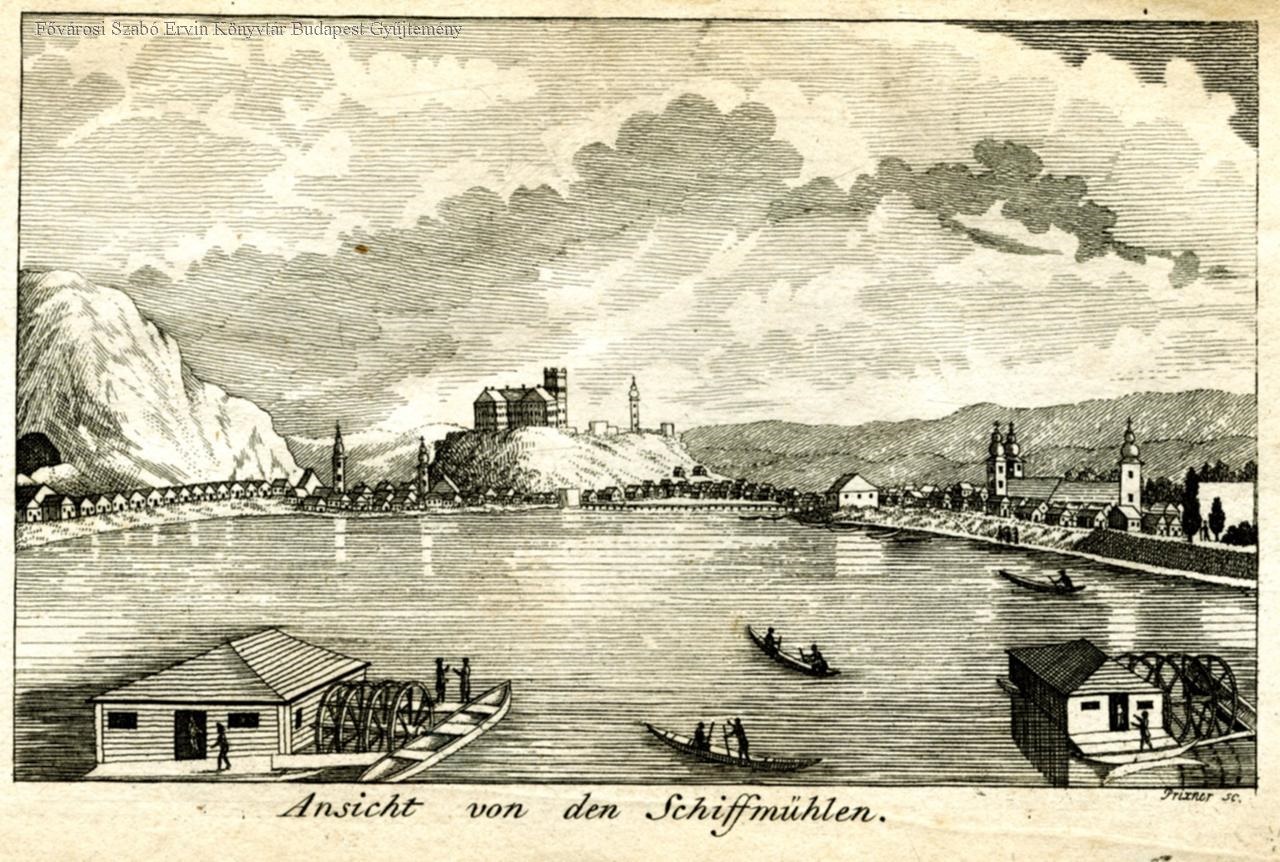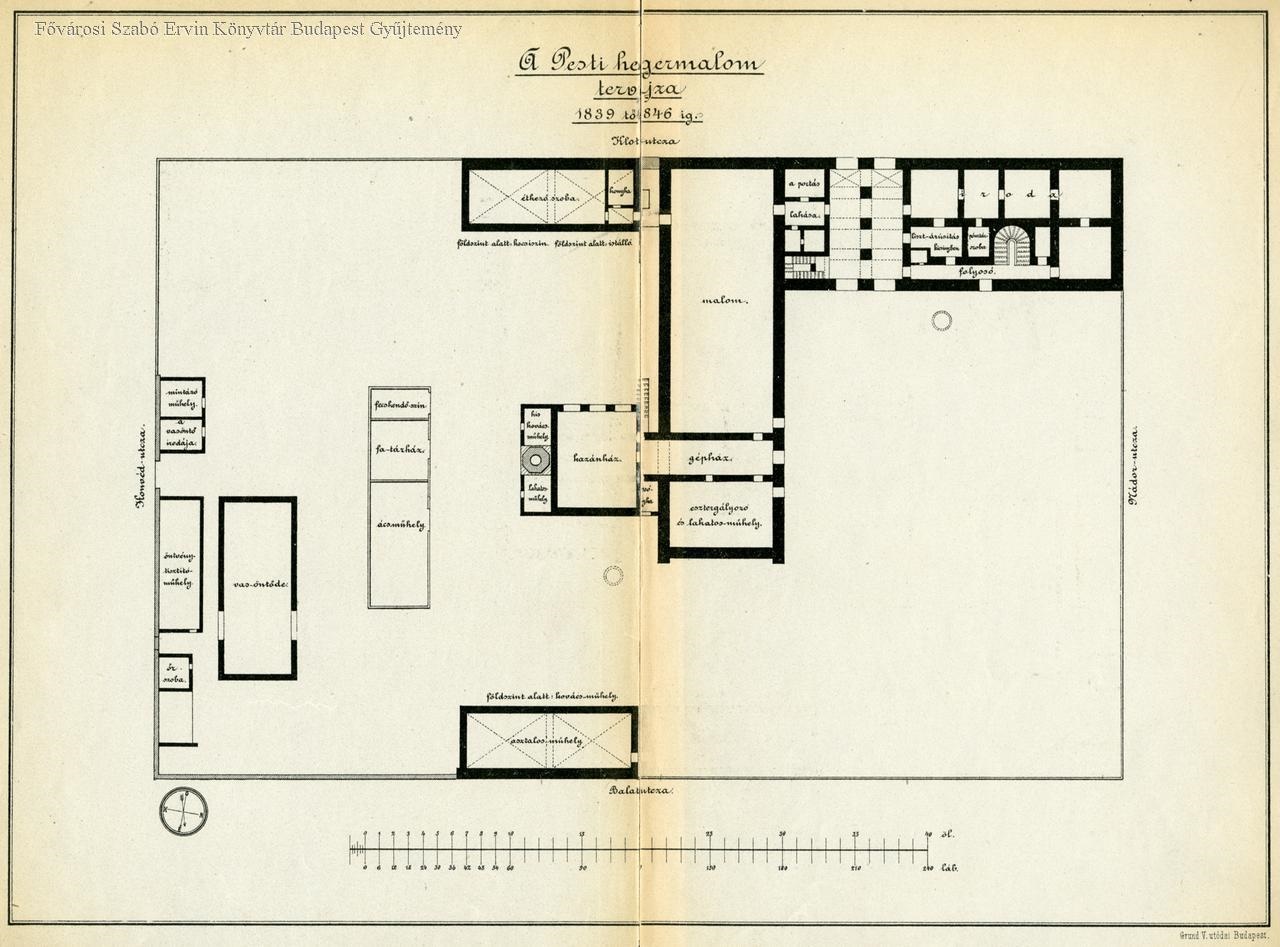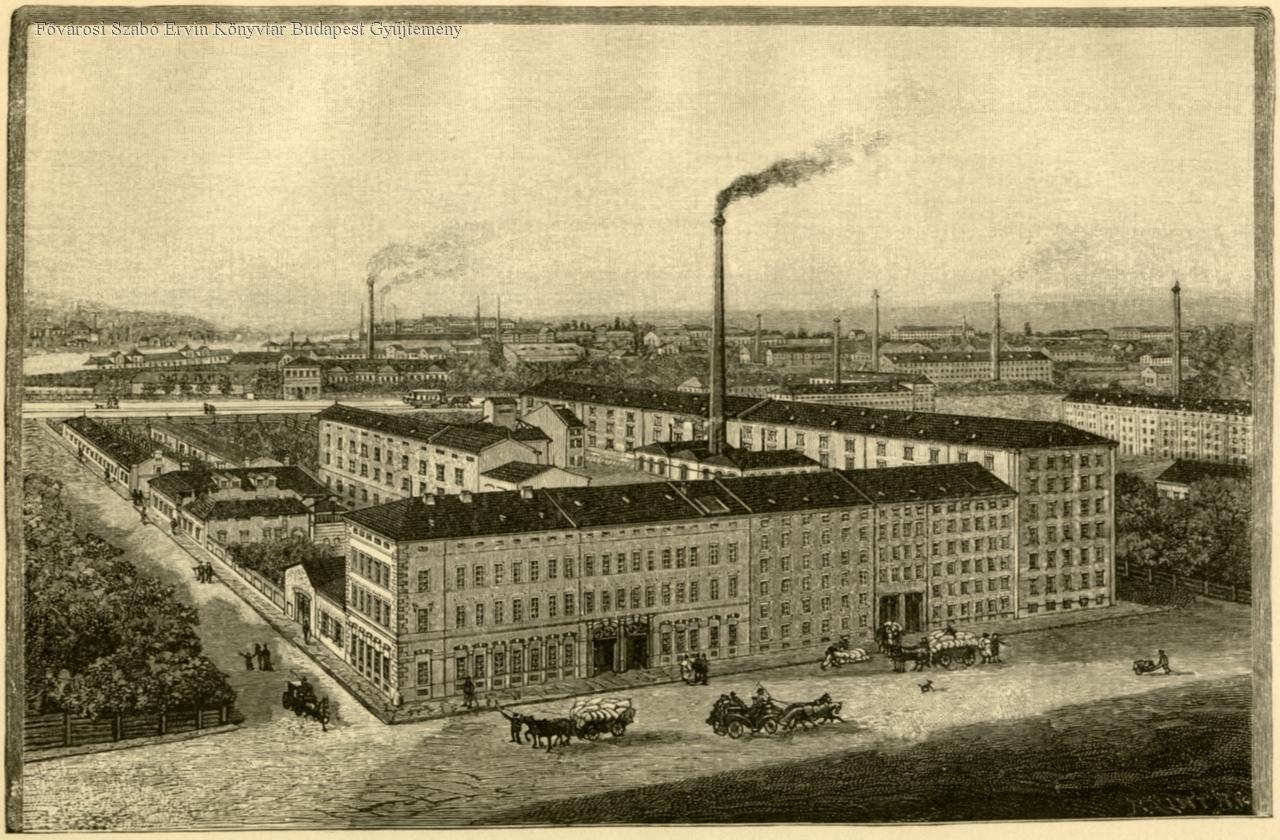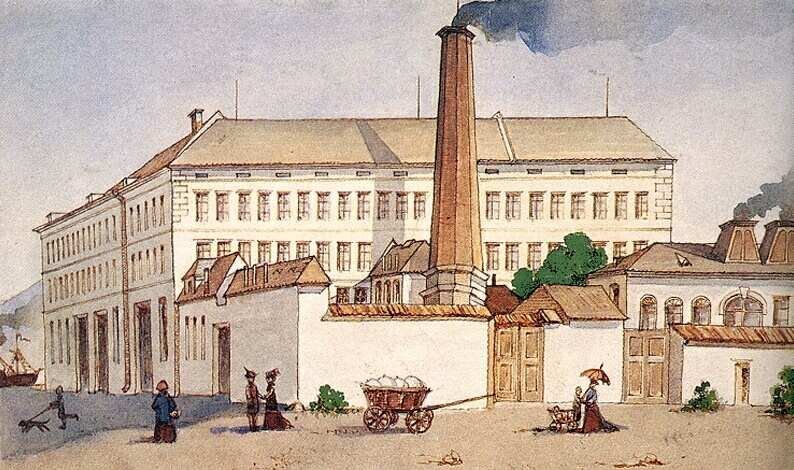For grain demand was high abroad in the 18th century and also at the beginning of the 19th century, especially during wars. An important question was therefore how to get the goods to the European markets quickly, so the Vienna government was also interested in the development of transport in Hungary, including shipping.
But István Széchenyi went one (or more) step(s) further. In addition to transportation and freight transport, he also considered the development of the domestic machine industry and the food processing industry important. It was obvious to him that if grain was processed into good quality flour at home, it could be sold at a better price. This, in turn, required modern mills.
One of Széchenyi's geniuses was to find the point where, if he gives a boost, he will launch a major development, be it steam boating, railway construction, scientific development or even the milling industry. He wanted to establish a steam mill that could be a model for other plants and at the same time become the basis of the modern Hungarian machine industry.
 Grain in the first half of the 19th century was still largely milled by watermills, and Pest also had many mills. The millers were not enthusiastic about the new steam mill (Source: FSZEK Budapest Collection)
Grain in the first half of the 19th century was still largely milled by watermills, and Pest also had many mills. The millers were not enthusiastic about the new steam mill (Source: FSZEK Budapest Collection)
He established a joint-stock company to establish the steam mill, the Pest Rolling Mill Company, on 26 December 1838. Széchenyi wanted to build a modern plant, and he even used the results of "industrial espionage". He corresponded with Lázár Mészáros (the later Minister of Defense of the first responsible Hungarian government), who was then stationed with his regiment in Milan, Italy, close to the Swiss border. Modern steam mills were already in operation in Switzerland, and even Swiss steam mills were the first to use iron grinding rollers instead of millstone from 1835. Mészáros, to help build the mill in Hungary, sent a man - with a proper “cover story” of course - across the border to enter one of the mills there and get what he could. The information obtained in this way was written by Mészáros to Széchenyi, who as a result did not follow the English pattern in the enterprise, but took over the more modern Swiss system.
The mill itself was built in Lipótváros, in the area bounded by today's Bálint Balassi - Béla Stollár - Falk Miksa and Balaton Streets, opposite today's Olympic Park, according to the plans of József Hild. The plant was named József Hengermalom [Joseph Rolling Mill] from the palatine Joseph.
The foundry's roller chairs were made in Austria and were, by the way, of the Swiss Sulzberger system, as Széchenyi also involved Swiss investors, the company Holzhammer, and they were even the largest shareholders.
 Blueprint of the Pest rolling mill. The mill was built in Lipótváros, in the area bordered by today's Bálint Balassi - Béla Stollár - Miksa Falk and Balaton Streets, according to the plans of József Hild (Source: FSZEK Budapest Collection)
Blueprint of the Pest rolling mill. The mill was built in Lipótváros, in the area bordered by today's Bálint Balassi - Béla Stollár - Miksa Falk and Balaton Streets, according to the plans of József Hild (Source: FSZEK Budapest Collection)
The two cylinder chairs were moved by a 30-horsepower steam engine. Today, 30 horsepower seems very small, but back then it was the most powerful steam engine in the country. The mill was capable of grinding 350 hundredweight of grain a day, which was many times the performance of the average watermills at the time. The finished mill was handed over 180 years ago, on 22 September 1841. Interestingly, Széchenyi only writes in his diary about the mill that day that he visited it. The construction cost more than planned, István Széchenyi explained this to the shareholders on 4 January 1842:
“The set-up of the mills far exceeded the amount we had calculated in advance to get it up and running. (…) Our first mill was built, I say, not only as solid and high as not even the flood of the Danube in 1838 could hurt it, but it was also so large that its production could be expanded three times without the construction of any new main walls. - We also exceeded our planned costs by the fact that in order to be able to continue and keep things in order more safely, we have acquired two steamers instead of one, and we have built all the apartments and workshops of the officials on our spacious plot; (…) Moreover, that the finishing of our mill fell precisely at a time when the Baja firestorm generally blew up the price of building timber by 25 per cent."
In the early days, technical difficulties hindered work in the plant; there were many failures and downtime. Shareholders have just received the guaranteed 5 percent return. Barely 9 years after its opening, in 1850 first the mill itself and then in 1851 the machine workshop burned down. Later, in 1867, a new mill was built on the site of the former building, which was demolished in 1911 for city planning reasons.
 The József Hengermalom burned down in 1850, and a new plant was built in its place in 1867. Pictured is the site of the Pest Rolling Mill Society in Lipótváros, 1889 (Source: FSZEK Budapest Collection)
The József Hengermalom burned down in 1850, and a new plant was built in its place in 1867. Pictured is the site of the Pest Rolling Mill Society in Lipótváros, 1889 (Source: FSZEK Budapest Collection)
Although not commercially successful, József Hengermalom had successfully fulfilled its function. The first rolling mill in Pest was much more than a simple steam mill. It also had its own machine workshop and foundry, which became the cradle of the modern Hungarian machine industry. Not only the Gépgyár Társaság [Machine Factory Company], which became independent by 1847, owes its existence to the József Hengermalom, but in fact also to the later international giant company, Ganz. The work of the József Hengermalom was carried out by Ábrahám Ganz of Swiss origin, who, independently, founded his foundry in Buda, which would later become the flagship of Hungarian industry.
The push started by István Széchenyi really gave a significant development to the Hungarian mill industry: from the 1850s, steam mills in Buda and Pest developed more and more. In addition, Budapest became the largest mill industry center in Europe by the turn of the century, following the patented shell-cast grinding rollers patented by András Mechwart (CEO of Ganz).
Cover photo: The József Hengermalom (Source: Magyar Technika, 1 September 1951)




































Hozzászólások
Log in or register to comment!
Login Registration